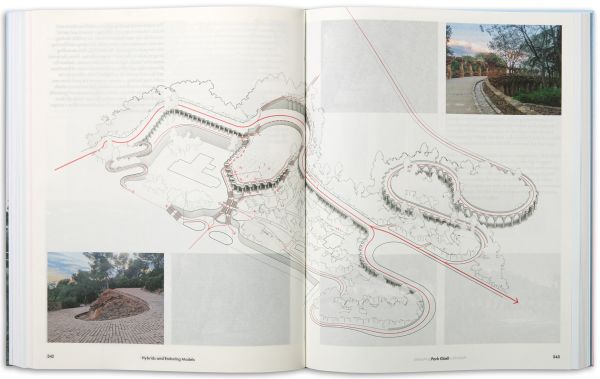Drifting Symmetries
Projects, Provocations, and other Enduring Models by Weiss/Manfredi
GVA Gemeinsame Verlagsauslieferung Göttingen
GmbH & Co. KG
P.O. Box 2021
37010 Göttingen
Germany
+49 551 384 200 0
info@gva-verlage.de
In an era when the dual challenges of climate change and social isolation loom large, Drifting Symmetries emerges as a pivotal exploration of architecture's role in shaping a sustainable and connected future. Weiss/Manfredi's groundbreaking work transcends the boundaries between landscape, infrastructure, and architecture by reinventing sites in response to environmental and social challenges. Presented in this comprehensive volume of projects and parallel research, their work demonstrates a multidisciplinary approach that invents new settings for public life by exploring the gradient between nature and architecture.
Featuring Weiss/Manfredi’s most acclaimed built works alongside historical precedents and insights from Thom Mayne, Barry Bergdoll, Walter Hood, Nader Tehrani, Tatiana Bilbao, James Corner, Meejin Yoon, Rahul Mehrotra, Hashim Sarkis, Sarah Whiting, and many others, Drifting Symmetries is more than a showcase of projects; it's a manual for expanding the terrain of contemporary architecture to construct more resilient settings for contemporary life.
Drifting Symmetries was chosen for The Editors’ Year-End Picks for the Holiday Season of the Architectural Record by Matthew Marani: “The book is Weiss/Manfredi’s first monograph in 15 years—and clearly the architect duo used that hiatus to radically reimagine how their buildings could be presented in such a format.”
“What I find remarkable is the fact that 144 of those 496 pages are devoted to precedents – the “Enduring Models” of the book’s subtitle. I can’t think of any other monograph that gives over even a few pages to the work of other architects, to articulating how projects by other architects influenced their own thinking, their own design. It speaks to the modesty of Weiss and Manfredi and their willingness to give credit to those who came before them, though it also speaks to their roles as educators and as insatiable learners.” John Hill, A Weekly Dose of Architecture Books
“Drifting Symmetries is not a 1980s coffee table monograph – despite its weighty dimension – but more of an inside look at how Weiss/Manfredi think, the intelligence they bring to the discipline.” Log Magazine 63







